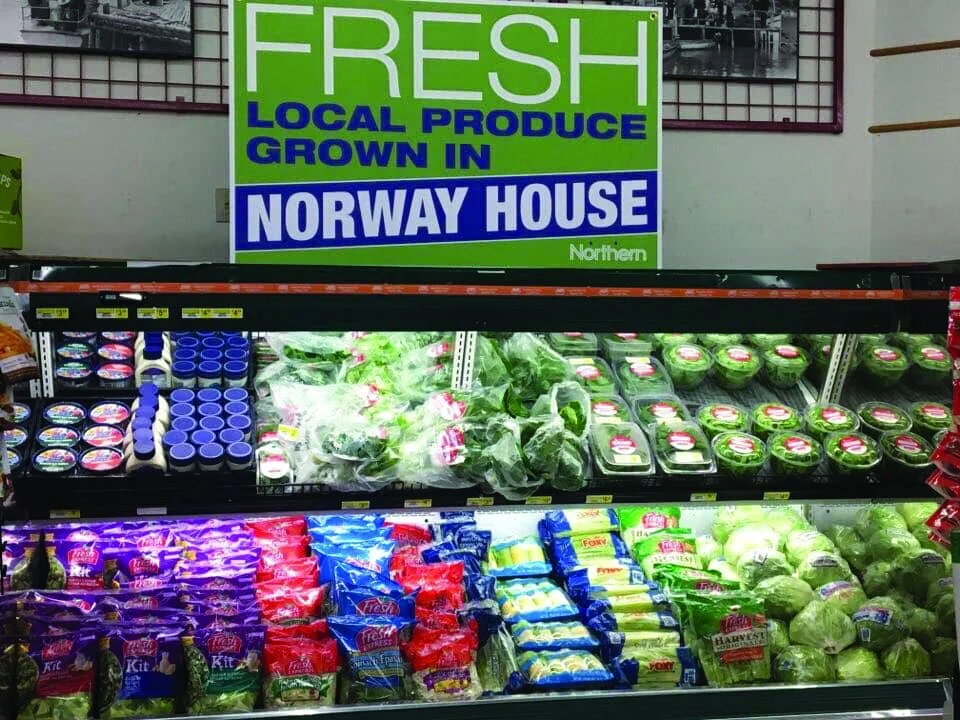CANADA: The Value of Hyper-Local Produce
The hyper-local food trend is more than just a fad: there’s a reason that hyper-local food is catching on in a big way. If you’re thinking about growing hyper-local food, it’s important to understand the value of the product and its market position.
At Yellowknife Co-op, produce is grown steps away from the store in a container farm!
BUT FIRST, WHAT IS HYPER-LOCAL FOOD?
Where does that ‘local’ head of lettuce you pick up from the grocery store actually come from? The Canadian Food Inspection Agency (CFIA) defines ‘local food’ as being grown in the province where it’s being sold, or within 50km of the border. But hyper-local food is even more local than being from the same province or being Canadian-grown. It is usually grown within the same town or city, or a short distance from where it’s being sold (sometimes even right behind the store!).
BENEFITS OF HYPER-LOCALLY GROWN FOOD
LOWER FOOD MILES
Hyper-local produce is usually grown within the same town or city, or a short distance from where it’s being sold.
As consumers are becoming more and more aware of the environmental impact of our food choices, the demand to lower food miles is also growing. A food mile can be thought of as the distance that food travels from the grower to the consumer. As a metric, it helps to assess the environmental impact of the foods we consume. A 2012 study showed that on average, 30% of food is imported in Canada, leading to annual emissions of 3.3 million metric tonnes of CO2.
Growing food hyper-locally can result in significantly lower food miles (and as few as zero food miles!) in both urban centres and rural communities. This reduces the carbon footprint of what you eat.
SUSTAINABLY GROWN
Growing hyper-locally in a hydroponic farming system has further benefits. Water in a closed hydroponic system is captured and reused, resulting in 90% less water use, and 95% less land than conventional farming.
TRACEABLE FOOD CHAIN
Growing hyper-local is completely traceable. This means you know exactly what’s going into your product. There are no synthetic pest control products, less risk for E.Coli, and a shorter supply chain to manage.
FRESHER PRODUCE WITH A LONGER SHELF LIFE
Growing food hyper-locally also means fresher produce and a longer shelf-life. Instead of wilting in a truck for hundreds of kilometers, hyper-local produce is shelf-ready immediately. This has a marked effect on the quality, as most produce loses 30 percent of nutrients just three days after harvest.
Life Water Gardens, a container garden project in Norway House Cree Nation, sells locally-grown produce at the Northern Store. Click here to learn more about the project and hear from its growers!
“When you get your hands on the fresh produce and taste it, you know it’s a good thing for your community in general. It’s really easy to get excited and pumped about [this project].” - Ian Maxwell from Norway House.
“When you get your hands on the fresh produce and taste it, you know it’s a good thing for your community. It’s really easy to get excited and pumped about [this project].”
— Ian Maxwell, co-manager of Life Water Gardens
WHERE IS HYPER-LOCAL PRODUCE POSITIONED IN THE MARKET?
For growers, it’s important to keep in mind that hyper-local food isn’t competing with foreign produce that you typically find in grocery stores. Between locally-grown vs imported food, the wholesale price for foreign produce is cheaper than local produce.
Keep in mind that grocery stores buy produce at wholesale prices, which means that they may buy produce from you at a certain cost, and then sell it with a 30% margin added to the price. When you walk into a grocery store and see produce being sold for $4.99, the reality is that the grocery store-bought it for $3.50 and added a mark up to the final price to help cover their costs of operations.
To find price-compatible products for market research in your area, look for products that will match your future products, such as living lettuce, other hydroponic greens, and other hyper-local, organic produce. Growcer greens belong in the hyper-local, value-added produce category.
GETTING STARTED WITH HYPER-LOCAL FOOD
Growing hyper-local food has many benefits: not only is it fresher, healthier, and better for the planet, it can also be a profitable investment for growers. When crafting your financial projections, keep in mind the value of hyper-local produce and where it sits in the market.
Interested in learning more about our hyper-local hydroponic growing systems? Find out more.





